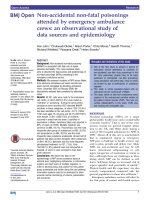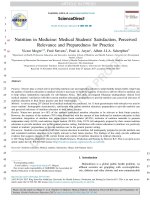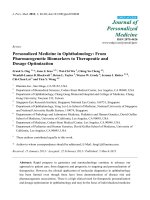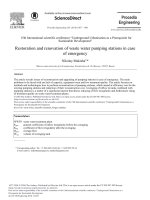- Trang chủ >>
- Mẫu Slide >>
- Văn Bản - Text
Pediatric emergency medicine trisk 2677 2677
Bạn đang xem bản rút gọn của tài liệu. Xem và tải ngay bản đầy đủ của tài liệu tại đây (44.03 KB, 1 trang )
an ipsilateral hypotonia, resulting in falling to the affected side. Herniation of the
cerebellar tonsil can cause head tilt toward the tumor and neck pain or stiffness.
Supratentorial masses may present with signs and symptoms derived from the
involved anatomic locations. Tumors near the optic chiasm may present with vision
deficits. Craniopharyngiomas, located in the pituitary gland, can cause visual
disturbances, headache, and alterations in endocrine function. Growth hormone
deficiency or hypothyroidism may cause delayed growth. Pineal tumors may cause
hydrocephalus by obstructing the aquaduct of Sylvius or can cause Parinaud
syndrome (deficits in upward gaze, convergence nystagmus, and impaired pupillary
response). Hypothalamic tumors may cause diencephalic syndrome, which includes
failure to thrive, wasting, and unusual euphoria. If a tumor is located near the third
ventricle, hydrocephalus and symptoms of increased ICP can result. Masses within
the cerebral hemispheres themselves usually present with focal motor dysfunction or
seizure.
The spinal cord may be the site of a primary tumor or, in some cases, the site of a
“dropped metastasis” from a primary lesion within the brain. These can present with
focal neurologic deficits attributable to areas of the spinal cord inferior to the lesion
(see “Tumors in and Around the Spinal Cord” section).









